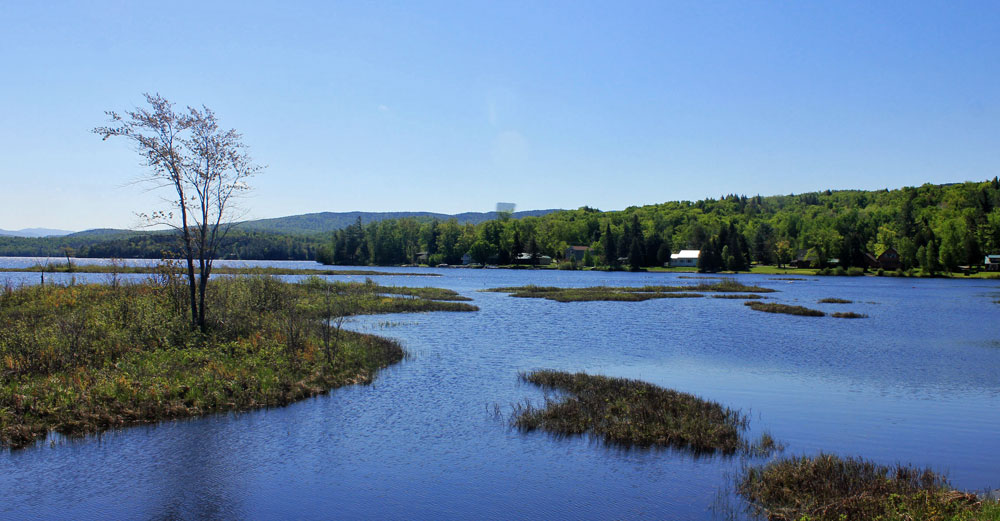
The numbers tell the story. Although water is the most abundant resource on the planet, just 3% is fresh water, and just 1% of that is available for drinking. It’s clear that water sustainability – the greatest guarantee for its availability – requires responsible and proper management. Our waterways are essential to the many various ecosystems and communities throughout New York, as well as our overall economy. At SUNY, our students, faculty, and staff recognize this and are leading efforts to manage and safeguard our valuable water resources.
These are just some of the many interesting things taking place across the SUNY system, where environmental experts are conducting vital research and developing effective solutions to keep our bodies of water healthy and sustainable, helping to protect the environment today and well into the future.
Clean rivers for the citizens of New York
The key elements for maintaining high-quality drinking water are the watershed protection and pollution prevention strategies. Back in 2015, SUNY environmental scientists from SUNY Cobleskill and SUNY Poly in partnership with the environmental organization Riverkeeper started a comprehensive study to monitor the water quality in the Mohawk River Watershed, one of the state’s most historic rivers. Moreover, the Mohawk River is the largest tributary to the Hudson River, and much of the Mohawk is part of the Erie Canal. More than 100,000 people draw their drinking water from the Mohawk River, and seven SUNY campuses call it home.
For the past four years, between the months of May and October, SUNY Cobleskill professor Barbara Brabetz and her team have been gathering surface water at various spots along the river from Rome to the Capital District, and 915 samples from 44 locations along 120 miles of the river were gathered to determine what actions may be necessary in order to keep the river safe and clean. The data was analyzed, and results from the extensive study were released last month. The results show that many locations are safe for swimming but several locations, especially after frequent and intense rain, are still contaminated by bacteria associated with sewage.
This study helps to reaffirm the importance of investment in water infrastructure and other elements of watershed management as essential to combat the effects of climate change. The Department of Environmental Conservation has begun a coordinated effort to upgrade wastewater treatment plants along the Mohawk River and last year, $187 million was committed to improving sewer systems.
Clearing algae from our lakes and ponds
In recent years, lakes in Upstate New York have experienced harmful algal blooms and are a significant concern across the state’s watersheds. New York lakes and ponds have experienced harmful algal blooms that are a serious threat to our drinking water as well. The algal produce dangerous toxins that cause illness or in some cases can cause death. Last year, Governor Cuomo addressed the increasing frequency of these harmful algal blooms (HABs) and announced the Harmful Algal Blooms program, which builds on the State’s $2.5 billion Clean Water Infrastructure Act.
SUNY professors are also conducting research in this area of water quality. Dr. Greg Boyer, a SUNY ESF professor, and Dr. David C. Richardson, associate professor at SUNY New Paltz, have been involved in extensive research programs related to HABs. Dr. Boyer’s research efforts have been critical to shedding some light on understanding what causes HABs and how to combat them. As the director of the Great Lakes Research Consortium, his work on the NOAA’s Monitoring and Event Response for Harmful Algal Blooms program (MERHAB) project involved developing monitoring systems to protect our drinking and recreational waters and helped provide a greater insight into the biological function of these toxins and the Great Lakes ecosystem.
Unfortunately, climate change plays havoc on our waterways too. According to the EPA, climate change is likely to increase water demand and shrink water supplies, threatening the availability of clean drinking water. Dr. Richardson has been collecting temperature data on more than 200 lakes in the northeast U.S. and southeast Canada. His alarming findings confirm the EPA’s prediction: about 90 percent of the lakes he surveyed showed surface warming, creating conditions for algae blooms that make the water undrinkable and killing off cold water fish like trout.
Healthy water systems and infrastructure
SUNY is also collaborating with other institutions to better understand water quality in today’s world. SUNY ESF has recently partnered with Clarkson University to run New York State’s new Center of Excellence (CoE) in Healthy Water Solutions. With $125,000 in state funding, the two colleges will work together to address the challenges in the state’s critical aging water infrastructures and aquatic systems. Faculty and students will tackle the serious issue of emerging and traditional contaminants in our waterways which pose serious health risks to the human body as well. Together with state government agencies and municipalities, their work will provide an insight into treatment procedures that will mitigate or remove such pollutants in our drinking water.
The Great Lakes are the largest system of accessible freshwater on Earth, and contain 84 percent of North America’s surface fresh water and over 20 percent of the world’s supply of freshwater. Though incredibly vast, the Great Lakes are under significant threat by pollution.
Improving human-environment interactions in our waterways
The Great Lakes Center at Buffalo State College is an institute of environmental experts that are dedicated to investigating the biological communities within the Great Lakes and their watersheds. The center is committed to improving human-environment interactions and their high-quality research contributes to the scientific understanding of aquatic ecology and ecosystems nationwide and across the globe. Such expertise provides critical information to policymakers, leading to more informed decisions and actions on protecting our waterways.
The Center is recognized as the leading benthic laboratory in the region and in 2017, was awarded a grant from the Environmental Protection Agency (EPA) to conduct intense research of the biological communities within the Great Lakes from 2017-2022. In collaboration with Cornell University, fresh water experts are focusing on benthic macroinvertebrates, or benthos, which are small aquatic animals (including worms, crustaceans, bivalves, and aquatic larval stages of insects) that live on the bottom of the lake. Benthos can be important indicators of water quality because due to their size, they are less likely to escape the effects of pollution.
With the rise of pollution and increased bacteria levels in these vast bodies of waters, ecosystem research and management is crucial to ensuring and sustaining fresh and safe water to humans here and across the world.
The protection of our state’s bodies of water, the health of our communities, and the prospects for future economic growth are linked to modern, reliable, and efficient water treatment systems. Environmental experts from across the SUNY system are combating New York’s water issues by developing innovation strategies and solutions every day so that our state’s water quality will be better for our all of state’s citizens.




Great article on a topic that doesn’t get near the attention it deserves- kudos for that. But to leave out the SUNY Oneonta Biological Field Station is an epic oversight…sorry